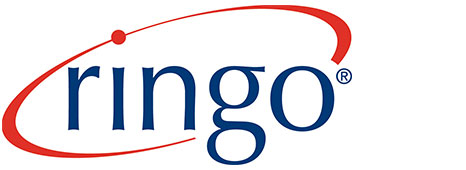Contingent Hospital Labor In High Demand & Need Intensifying

The U.S. healthcare industry has been experiencing physician and nurse shortages that are projected to get much worse before improving. Utilization of contingent labor in healthcare (locum tenens) has served to mitigate the widening gaps in hospital and primary care staffing, but positions continue to go unfilled, nonetheless.
The following is a breakdown of the numbers as they presently stand, as well as a look forward at relevant stat projections regarding hospital labor and demographics—all underscoring the need for a contingent labor management system that increases capabilities and maximizes efficiencies to achieve optimal results, such as RINGO.
Case Study: Massachusetts
There was an initiative set forth in Massachusetts ahead of the 2018 midterms election to establish nurse-patient assignment limits to protect patients, but it was ultimately voted down. The bill, referred to as “Question 1” to reflect its position on the ballot, was largely supported by Democrats, but Rep. Ronald Mariano, the Democratic majority leader of the Massachusetts House of Representatives, asserted his opposition of the bill in an op-ed:
“Hospitals with a higher percentage of private payers would be able to afford the staffing ratios, but only by siphoning off nurses from nearby community hospitals and nursing homes. As a result, the Commonwealth’s most vulnerable residents will have reduced access to key services and lower quality of care.”
In the case of “Question 1,” the bill’s downfall may have been in the stringency of the details (fines, penalties, immediacy and lack of exceptions, for instance), but the attempt’s ultimate failure should not detract from these widely accepted realities:
- Patient outcomes are improved when hospitals staff more nurses.
- Nursing is a highly stressful job and the problem of understaffing and subsequently, of burnout, is deserving of legitimate discussion.
Enter: Contingent Labor
The term "contingent worker" encompasses freelancers, independent professionals, temporary contract workers, independent contractors, or consultants. Typically, those working in such a capacity are not included on their employer's payroll, as they are not full-time members of the organization. Contingent workers may either be hired directly, or they may be recruited via the talent-procuring services of a staffing firm.
In the medical community, these ad-hoc workers are aptly referred to as locum tenens, a Latin phrase meaning "to hold the place of" or "to substitute for."
Contingent Labor in Healthcare
The United States’ contingent labor market is booming, with 5.9 million workers reported to be working on a contingent basis in May 2017. Nearly one-third (31.3%) of all of these contingent workers are part of the education and health services sector, compared to just 22.7% of the non-contingent workforce contributing to those same areas. That makes education and health services the most contingent worker-saturated industry by far, more than doubly so that of the next-most contingent labor-heavy sector, professional and business services.
So, how could it be that there are drastic, and still growing, nurse and physician shortages plaguing the United States healthcare system?
Aging and Expanding Population
By 2030:
- The largest living adult generation to-date, the Boomers, will all be over the age of 65 (although millennials are expected to surpass boomer workforce participation in 2019).
- Growth factors, such as increased lifespans and international migration, as well as natural growth (births), will drive a U.S. population increase of around 9.5%, from 328 million to 359 million.
- The number
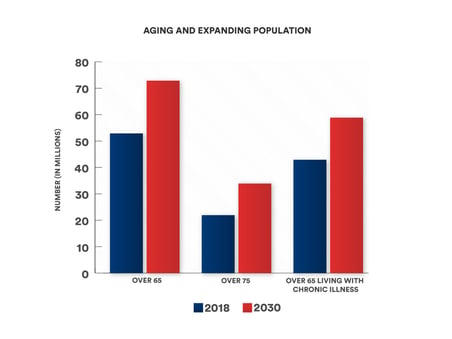 of people aged 65 and older will increase 38% from 53 million to 73 million.
of people aged 65 and older will increase 38% from 53 million to 73 million. - The number of people aged 75 and older will increase 55 % from 22 million to 34 million.
- The number of people aged 65 and older living with at least one chronic disease will increase over one-third, from 43 million to 59 million.
Medical Staffing Forecast
Synopsis: As it stands, persistent physician and nurse shortages suggest the United States can’t keep up with demand for healthcare workers. This is only projected to intensify as the previously detailed demographic shift unfolds throughout the next decade or so.
Today:
- 94% of hospitals, medical groups and other healthcare facilities used temporary doctors in 2016, up from 91% in 2014, and 74% in 2012.
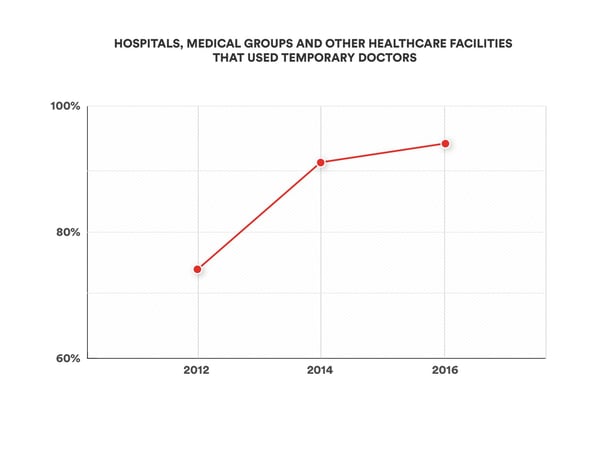
- In 2014, approximately 30% of healthcare jobs across the nation went unfilled.
- In 2016, the percentage of unfilled healthcare job openings rose to 50%.
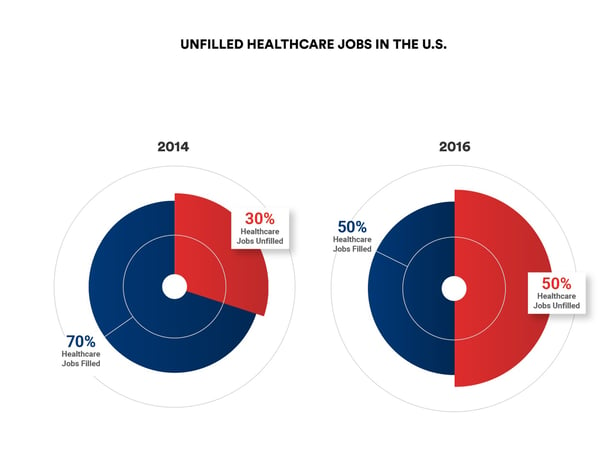
Projections:
- Employment of healthcare occupations is projected to grow 18% from 2016 to 2026, much faster than the average for all occupations, adding about 2.4 million new jobs.
- The US will need to hire 2.3 million new health care workers by 2025 in order to adequately take care of its aging population.
- By 2030, the estimated primary care physician shortage could increase from 18,000 to 49,000.
- There are currently around 1 million registered nurses over the age of 50, meaning one-third of the workforce could be at retirement age in the next 10-15 years.
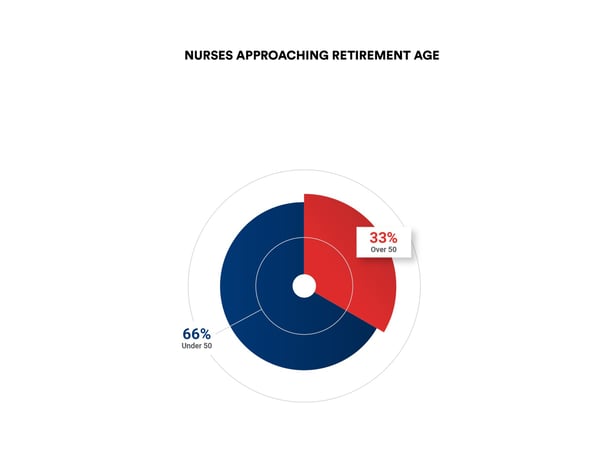
The issue of nurse and physician shortages, and subsequently, of nurse and physician burnout, is a matter of public safety. Patients are in danger of receiving inappropriate treatments and susceptible to greater probabilities of negligence when doctors’ and nurses’ bandwidths are spread too thinly across myriad assignments.
How RINGO helps
The nonprofit Association of American Medical Colleges (AAMC) proposes several ways healthcare staffing issues could be mitigated, not the least of which includes better use of technology. To that point, Ringo offers software as a service (SaaS) that can be implemented in two ways:
- As a VMS solution on the client side
- As an MSP gateway for staffing suppliers
Who says progress can’t be mutually beneficial for both sides of the client-vendor relationship?
For healthcare providers, the visibility granted by the RINGO platform helps to reduce scheduling discrepancies lending to nurse and physician burnout. It also helps hospital staff managers stay up to date on fill rates, time-to-fill, total spending across the organization, and more.
For staffing companies, RINGO helps take back control of relationships, by bringing a tech solution to your clients before they bring one to you. Then, you’ll have technology, plus a built-in sourcing arm (you) to effectively act as an MSP.
With RINGO VMS, healthcare providers aren't just removing supply chain costs, they're improving patient safety, through accurate, real-time reporting, operational efficiency, and scheduling transparency.
To learn more about how RINGO is helping community hospitals, ambulatory care facilities and small- to medium-sized healthcare systems reduce their temporary labor costs without cutting staff, Contact Us Today. We’re all in this together.

